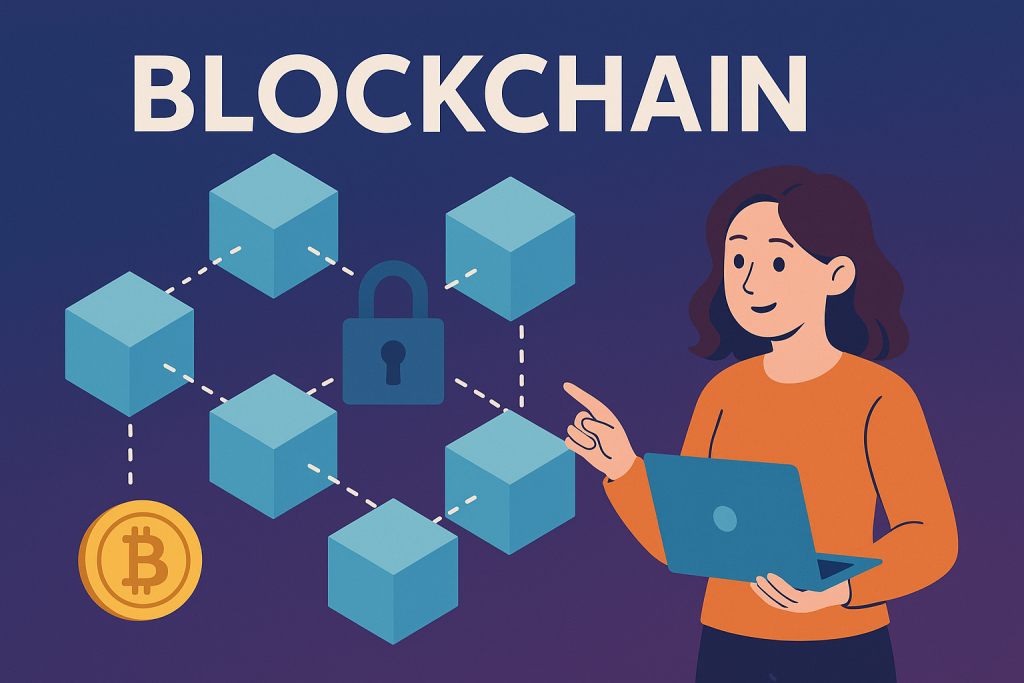Learn what blockchain is, how it works, and why it’s at the heart of Web3 in this beginner-friendly article.

Blockchain might sound like a complex tech buzzword, but at its core, it’s surprisingly simple — and incredibly powerful. It’s the foundational technology behind Web3, cryptocurrencies like Bitcoin and Ethereum, NFTs, and decentralized applications (dApps).
🔗 What is Blockchain?
A blockchain is a type of database, but unlike traditional databases controlled by a single company or entity, blockchains are decentralized and distributed across a global network of computers (called nodes).
It’s called a “blockchain” because it stores data in blocks that are linked together in chronological order, forming a chain.
⚙️ How Blockchain Works (Step-by-Step)
- A Transaction Is Made: Let’s say you send some crypto to a friend.
- The Network Verifies the Transaction: Multiple computers (nodes) validate the transaction using consensus mechanisms like Proof of Work or Proof of Stake.
- The Transaction Is Approved and Added to a Block: Once verified, your transaction is grouped with others into a “block.”
- The Block Is Linked to the Previous One: Each new block references the one before it, creating a secure chain of records.
Once data is written on the blockchain, it’s extremely difficult to change — providing transparency, security, and trust.
🛡️ Key Benefits of Blockchain
- Decentralization: No single point of control or failure.
- Transparency: All transactions are visible to anyone with access to the blockchain.
- Security: Uses cryptography to protect data from tampering.
- Immutability: Once something is recorded, it can’t be altered.
- Efficiency: Smart contracts can automate processes and reduce the need for intermediaries.
🌐 Real-World Uses of Blockchain
Blockchain is being used in a variety of fields:
- Cryptocurrencies: Bitcoin, Ethereum, and thousands of altcoins run on blockchain.
- Smart Contracts: Automatically execute agreements when conditions are met.
- Supply Chain Tracking: Transparent tracking from production to delivery.
- Digital Identity: Users control their own identity data.
- Voting Systems: Secure and tamper-proof digital voting.
🧠 Why Blockchain Matters for Web3
Web3 is all about empowering users. Blockchain enables that by allowing individuals to:
- Own their data
- Conduct peer-to-peer transactions
- Participate in decentralized finance (DeFi)
- Engage with platforms without needing to trust a central authority
Without blockchain, Web3 would not be possible. It’s what makes decentralization, trustless systems, and digital ownership a reality.
🚀 Final Thoughts
Blockchain may seem complicated, but it’s really just a way to store and verify data without relying on middlemen. As Web3 grows, blockchain will continue to be the backbone of a more open, secure, and fair internet.
Whether you’re interested in investing in crypto, building dApps, or simply understanding the next big wave in tech — understanding blockchain is a crucial first step.

Leave a Reply